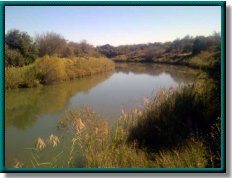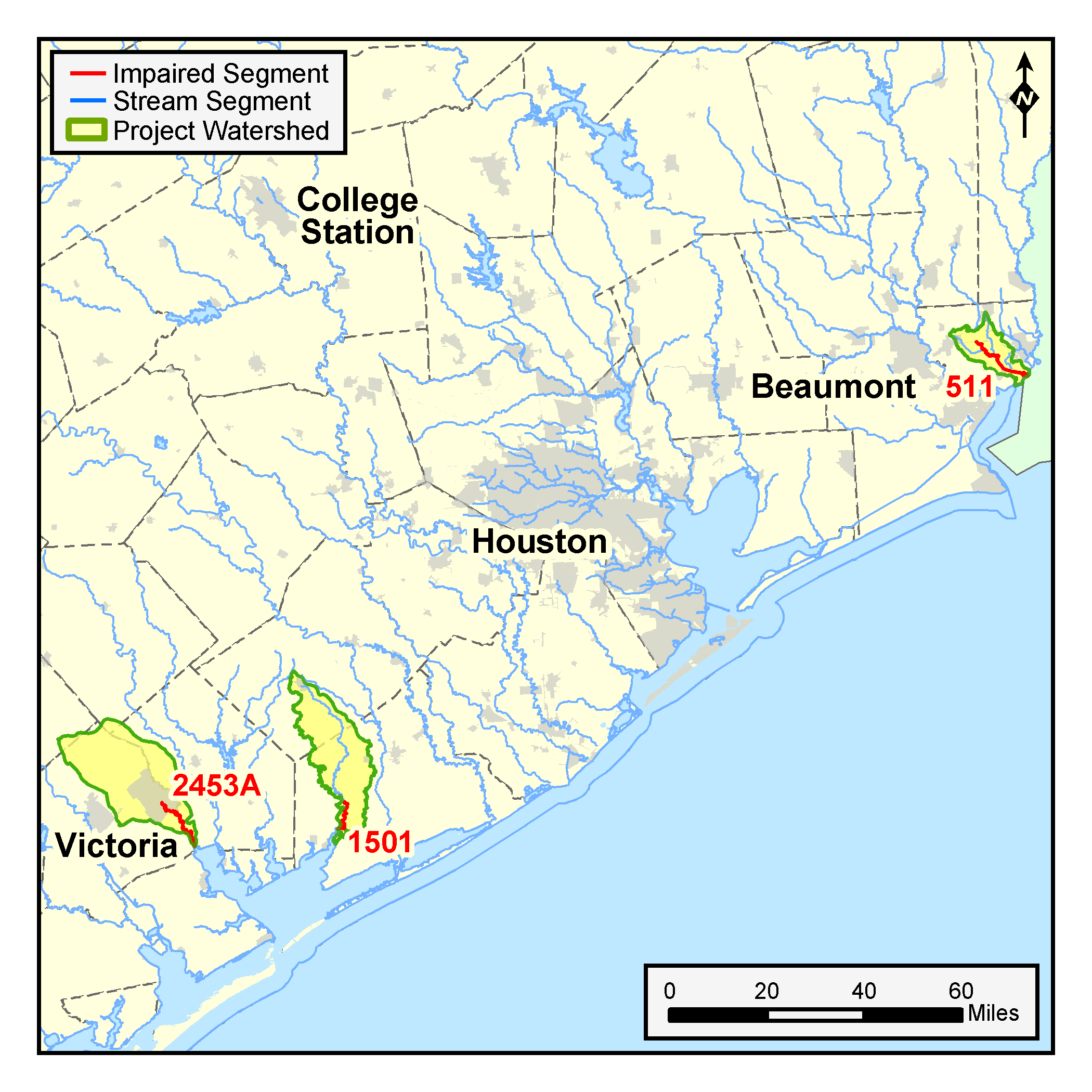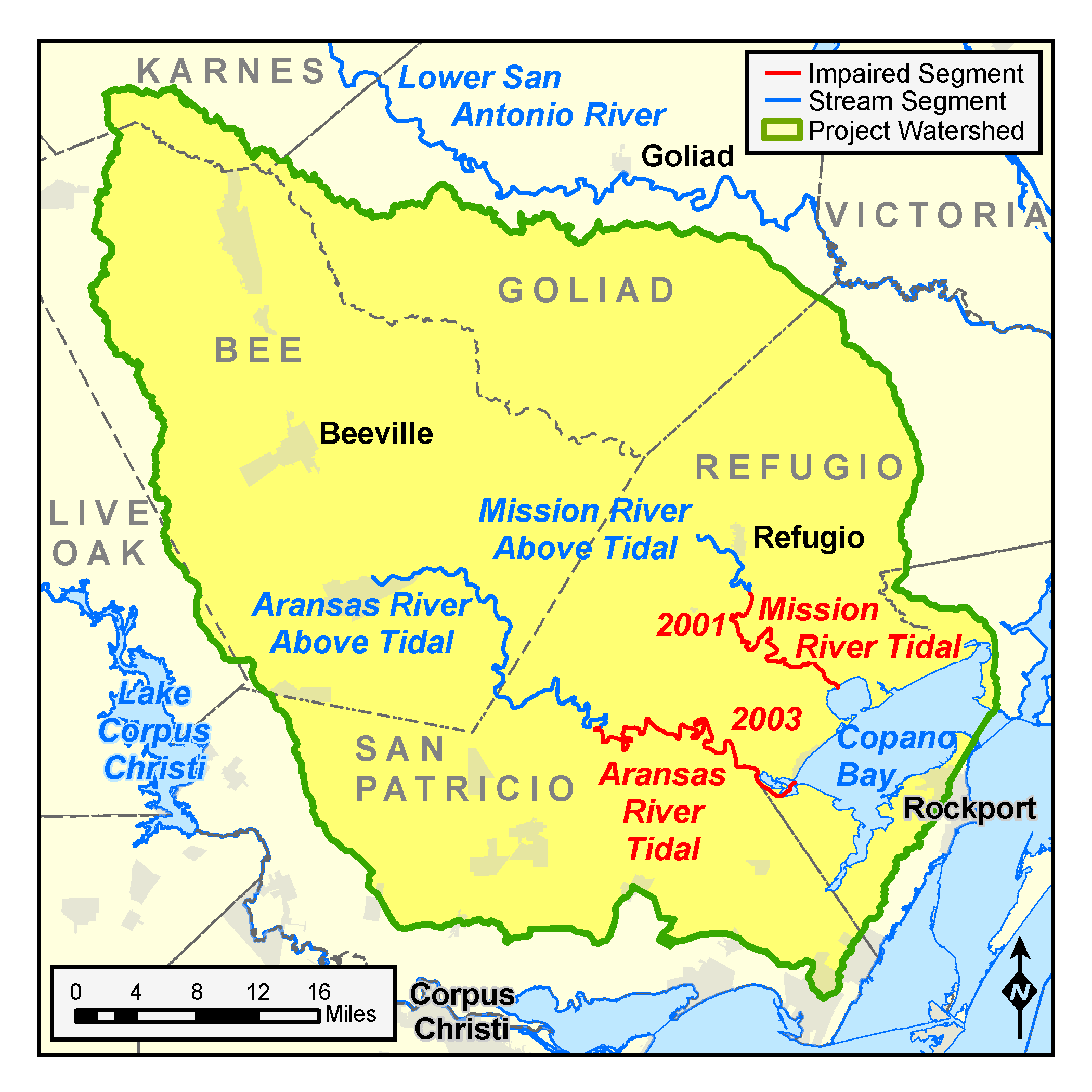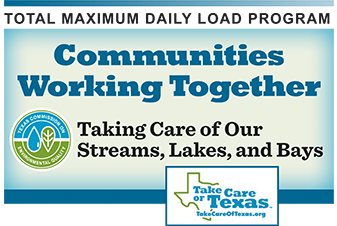Tidal Streams in Texas

Parameter: Dissolved oxygen
River Basins: San Antonio-Nueces Coastal, Nueces-Rio Grande Coastal (Phase II); Bays and Estuaries, Sabine River, Colorado-Lavaca Coastal (Phase I)
Segments: 2001, 2003, 2201, 2301 (Phase II); 0511, 1501, 2453A (Phase I)
Counties: Refugio, San Patricio, Willacy, Cameron (Phase II); Jackson, Matagorda, Orange, Victoria (Phase I)
On this page:
- Background and Goals
- Watershed Description
- Status
- Phase II Documents
- Phase I Documents
- Contact the TMDL Program
Background and Goals
Tidal streams are highly productive transitional areas between the freshwater of rivers and the saltwater of bays. Tidal streams serve as nurseries for many fish and shellfish, including several species important for commerce and recreation.
Routine monitoring of several tidal streams revealed dissolved oxygen measurements that were not meeting water quality standards. Dissolved oxygen is essential to the survival of fish and other aquatic life.
Prior studies raised questions concerning the appropriateness of dissolved oxygen criteria in the standards, because tidal systems are naturally quite variable over space and time.
No generally accepted method exists for determining the health of aquatic communities in tidal streams. The goal of this project was to gather data and information to support developing such a methodology.
Watershed Description
This project focused on the tidal portions of two rivers — Mission River Tidal and Aransas River Tidal, both on the middle Texas coast.
Aransas River Tidal extends from its confluence with Copano Bay at the border between Aransas and Refugio counties to a point one mile upstream of US 77 on the borders of Refugio and San Patricio counties.
Mission River Tidal extends from the confluence with Mission Bay in Refugio County to a point 4.6 miles downstream of US 77 in Refugio County.
Status
Texas Parks and Wildlife Department (TPWD) carried out both phases of this project under an interagency agreement with TCEQ.
Phase I of this project, completed in 2007, focused on the tidal portions of three streams—Cow Bayou (Segment 0511) on the upper Texas coast, and Tres Palacios Creek Tidal (Segment 1501) and Garcitas Creek Tidal (Segment 2453a) on the middle coast. In addition to those three streams, two other tidal streams—Lost River on the upper coast and West Carancahua Creek on the middle coast—were chosen to serve as reference streams for this study.
Monitoring of water quality and the fish and invertebrate communities of the Phase I streams began in spring 2003 and was completed in fall 2004. The data were then analyzed to develop and propose a new, scientifically sound method for assessing the health of aquatic communities in tidal streams.
Lessons learned during Phase I were then applied to the study of additional tidal streams in Phase II of the project. The new assessment method developed in Phase I was applied to data collected from the tidal portions of two streams—Mission River Tidal (Segment 2001) and Aransas River Tidal (Segment 2003). TPWD applied the statistical methods used to assess these two water bodies to the data sets of 12 other tidal streams in Texas.
Monitoring of water quality and fish and invertebrate communities in the Phase II streams began in spring 2008 and was completed in fall 2009. Phase II was completed in November 2011.
The final reports from both phases were submitted to the TCEQ Standards Work Group for use in determining whether to propose changes to the aquatic life use standards for tidal streams.
Phase II Documents
- Final Report, Spatial Assessment of a Derived Biocriteria (November 2011)
- Final Report, Multivariate Methodology Assessment (March 2011)
- Final Presentation, Multivariate Methodology Assessment of the Mission and Aransas Rivers (January 2012)
- Coast-Wide Assessment of Texas Tidal Stream Communities
- Historical Data Report
-
Quality Assurance Project Plan
(including work plan)
Phase I Documents
- Cow Bayou Tidal Final Report
- Tres Palacios Creek Tidal and Garcitas Creek Tidal Final Report
- Tres Palacios Creek Tidal and Garcitas Creek Tidal Final Report
-
Appendix 4: Analysis of Stream Flow Data
(Note: Other appendixes are within the main report.)
Contact the TMDL Program
Email tmdl@tceq.texas.gov and mention the Tidal Streams project in the subject line. Or call us at 512-239-6682. To find out about the standards for tidal streams, please e-mail standards@tceq.texas.gov.






 Back to top
Back to top